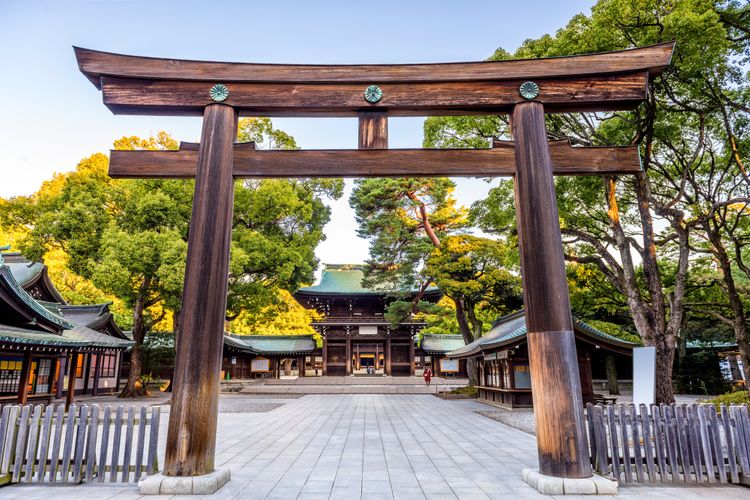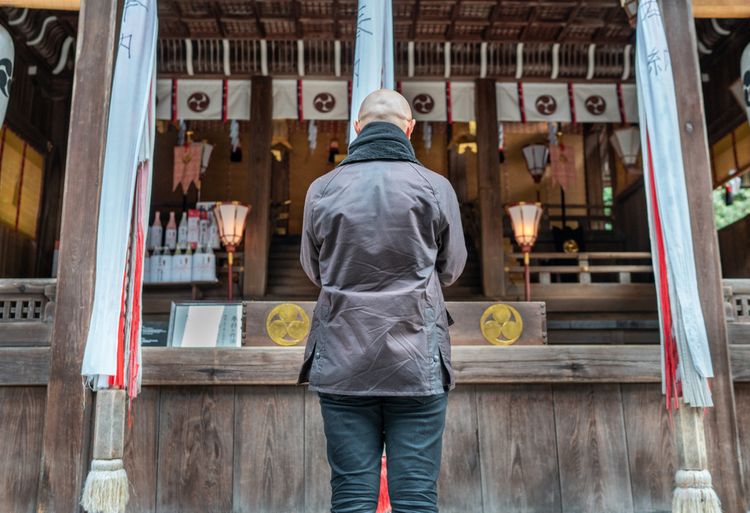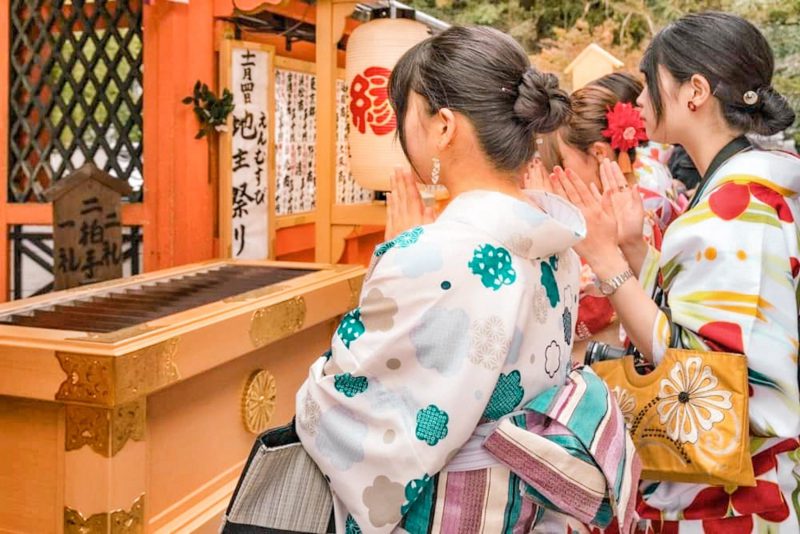Japan has many beautiful and historic shrines or temples. With over 155,000 to choose from throughout Japan, finding one is far easier than figuring out what to do once you get there. In this article, we’re going to break down the key differences between shrines and temples and explain how to pray at each.
What Is a Shrine?

Shrines, which serve as places of Shinto worship, originated in Japan. There are over 80,000 across the country; slightly outnumbering temples at around 75,000.
In the Shinto faith, there are many gods, most of whom can be found in the natural world. It is not uncommon to come across gods of rivers, mountains, trees and more. Because of this, shrines are typically places of natural refuge. They can be easily recognized by the presence of a torii gate at the entrance, which are often painted bright red or orange. These gates serve as a dividing line between the physical and spiritual worlds.
What Is a Temple?

Unlike shrines, temples got their start in China and India before arriving in Japan. They are places of Buddhist worship and occasionally serve as burial grounds as well.
Where shrines are marked with a relatively simple torii gate, temple gates can often be massive wooden structures with sloping roofs and ornate tiling. On either side of these gates, visitors can expect to be greeted by muscular deities known as Nio Guardians, which protect the temple from evil spirits. Lastly, since temples are intended to worship Buddha, they will always be home to at least one sacred Buddha statue.
Which One Should I Visit?

Though Shinto is the ethnic religion of Japan, Japanese people tend to visit shrines and temples interchangeably. While both have their merits and are architecturally beautiful in their own ways, if your intention is to pray, they tend to serve slightly different purposes.
Where shrines are heavily influenced by nature, they typically deal with matters pertaining to life and the physical world. It’s not uncommon to see celebrations such as weddings or coming of age ceremonies held here. If you want to pray for a happy life, health, good luck at a job interview or anything of the like, a shrine is most likely the best choice for you.
On the other hand, temples focus primarily on spiritual matters and issues of the afterlife. Here, visitors typically pray for family members who have passed away and hold remembrance ceremonies for the deceased.
How to Pray at a Shrine

Before praying at a shrine, there are a few simple etiquette rules that you should keep in mind.
- Before passing through the torii gate at the entrance, stop and bow in the direction of the shrine as a show of respect.
- Once inside and on the walkway to the shrine, stay to the side of the path. In Shinto custom, the middle of the path is reserved exclusively for the gods. Most likely, no one will say anything even if you do walk in the middle, but it’s always better to err on the side of politeness.
- Your first stop along the path will be at a fountain, called a “choyuza”. Here, visitors are expected to cleanse and purify themselves before entering the shrine.
- To properly purify at a choyuza, take one of the provided ladles with your right hand, fill it, and use some of the water to clean your left hand. Next, repeat the process by holding the ladle with your left hand and cleaning the right. Lastly, pour a bit of water into your left hand and use this to clean your mouth. Be sure to spit this water into the lower run-off basin afterwards. Once you are finished, hold the ladle straight up with your right hand and allow the remaining water to pass over the handle to clean it before placing it back onto the stand.
- Upon approaching the shrine, bow once.
- While standing in front of the wooden offertory box, toss a few coins through the slotted top. Don’t worry, the amount you give doesn’t make your prayer any more or less effective. Most people tend to throw between ten and fifty yen.
- You may find a bell with a large rope attached to it over the offertory box. If so, ring the bell once or twice to get the attention of the gods.
- Before praying, bow deeply two times, then clap your hands twice.
- With your hands clasped in front of you, say your prayer to the gods.
- Once you are finished, bow once more.
- As you are leaving, before passing through the torii gate, turn around and bow once again in the direction of the shrine.
How to Pray at a Temple

On the surface, praying at a temple may look the same as doing so at a shrine, but there are a few key differences to keep in mind.
- Much like the shrine instructions above, stop at the temple gate before entering and bow as a sign of respect. Once you have passed underneath, stay to the side of the path.
- As with shrines, your first stop will be at a choyuza fountain to purify your body.
- Unlike shrines however, many temples also feature a large incense censer in front of the entrance to the temple. At some locations, you can buy incense to light yourself, but if not, simply fan your body with the incense smoke in an act of purifying the body and spirit.
- Once you are standing in front of the offertory box, bow slightly and toss in any number of coins.
- Bow once more, clasp your hands in front of you (don’t clap!), and say a prayer to the Buddha.
- Once finished, bow deeply one last time.
- Once you’ve exited the main grounds, bow once more in the direction of the temple.
Conclusion
A visit to a shrine or temple is a quintessential Japanese experience and a must-do on your vacation to Japan. The proper prayer etiquette described above may seem like a lot to remember, but when in doubt, keep an eye on the people around you and follow their lead! As long as you are respectful during your visit, no one will mind if you forget a step or two.
If you want to give feedback on any of our articles, you have an idea that you’d really like to see come to life, or you just have a question on Japan, hit us up on our Facebook!
The information in this article is accurate at the time of publication.

